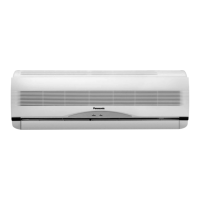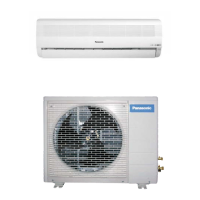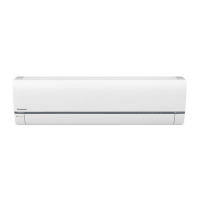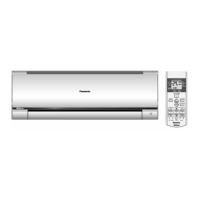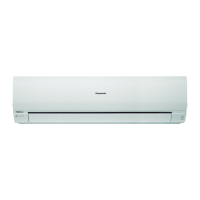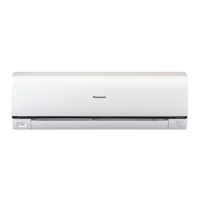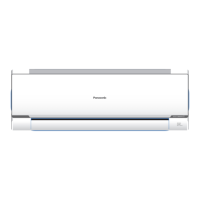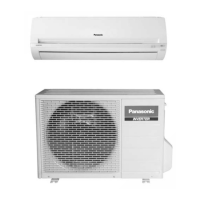10 Installation and Serving AirConditioner Using R410A
10.1. OUTLINE
10.1.1 About R410A Refrigerant
1. Converting air conditioners to R410A
Since it was declared in1974 that chlorofluorocarbons (CFC), hydro chlorofluorocarbons (HCFC) and other substances pose
a destructive danger to the ozone layer in the earth´ s upper stratosphere (20 to 40 km above the earth), measures have been
taken around the world to prevent this destruction.
The R22 refrigerant which has conventionally been used in ACs isanHCFC refrigerant and, therefore, possesses this ozone
destroying potential. International regulations (the Montreal ProtocolOzone-Damaging Substances) and the domestic laws of
vari
ous countries call for the early substitution of R22 by a refrigerant which will not harm the ozone layer.
In ACs, the HFC refrigerant which has become the mainstream alternative called R410A.Compared with R22, the
pressure of R410A is approximately 1.6 times as high at the same refrigerant temperature, but the energy
efficiency is about the same. Consisting of hydrogen (H), fluorine (F) and carbon (C), R410A isanHFC
refrigerant. Another typicalHFC refrigerant
isR407C. While the energy efficiency of R407C is some what inferior
to that of R410A, it offers the advantage of having pressure characteristics which are about the same as those of
R22, and is used mainly in packaged Acs.
2. The characteristics of HFC(R410A) refrigerants
a. Chemical characteristics
The chemical characteristics of R410A are similar to those of R22 in that both are chemically stable, non-
flammable refrigerants with low toxicity.
However, just likeR22, the specific gravity of R410A gas is heavier than that of air.Because of this, it can cause
an oxygen deficiency if it leaks intoaclosed room since itcollects in the lower area of the room.Italso generates
toxic gas when i
t isdirectly exposed to a flame, so it must be used inawell ventilated environment where itwill
not collect.
Table 1 Physical comparison of R410A and R22
Composition (wt%)
Boiling point (°C)
Vaporizing pressure (25°C)
Saturated vapor density
Flammability
Ozone-destroying point (ODP)
Global-warming point (GWP)
R410A
R32/R125(50/50)
-51.4
1.56 Mpa(15.9 kgf/cm2)
64.0 kg/m3
Non-flammable
0
1730
R22
R22(100)
-40.8
0.94 Mpa(9.6 kgf/cm2)
44.4 kg/m3
Non-flammable
0.005
1700
b. Compositional change (pseudo-azeotropic characteristics)
R410A is a pseudo-azeotropicmixture comprising the two components R32 and R125. Multi-component
refrigerants with these chemical characteristics exhibit little compositional change even from phase changes
due to vaporization 9or condensation), which means that there is little change in the circulating refrigerant
composition even when the refrigerant
leaks from the gaseous section of the piping.
Accordingly, R410A can be handled inalmost the same manner as the single-component refrigerant R22.
However, when charging, because there isaslight change in composition between the gas phase and the liquid
phase insideacylinder or other container, charging should basically beginwith the liquidside.
c. Pressure characteristics
As seen inTable 2, the gas pressure of R410A is approximately
1.6 times as high as that of R22 at the same
refrigerant temperature, which means that special R410A tools and materialswith high-pressure specifications
must be used for all refrigerant piping work and servicing.
Table 2 Comparison of R410A and R22 saturated vapor density
R410A
0.30
0.70
1.35
2.30
3.73
4.15
R22
0.14
0.40
0.81
1.42
2.33
2.60
Refrigerant Temperature( )
-20
0
20
40
60
65
°C
35
CS-PV9DKE / CU-PV9DKE / CS-PV12DKE / CU-PV12DKE
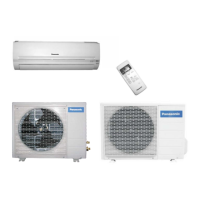
